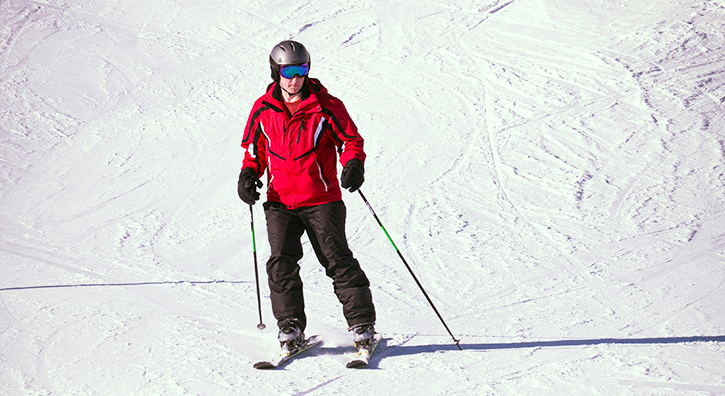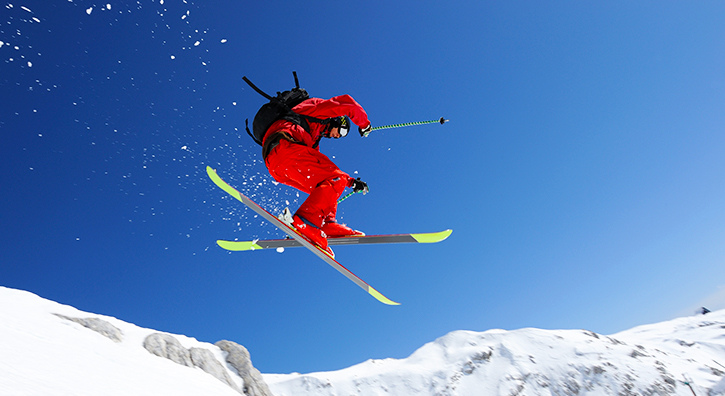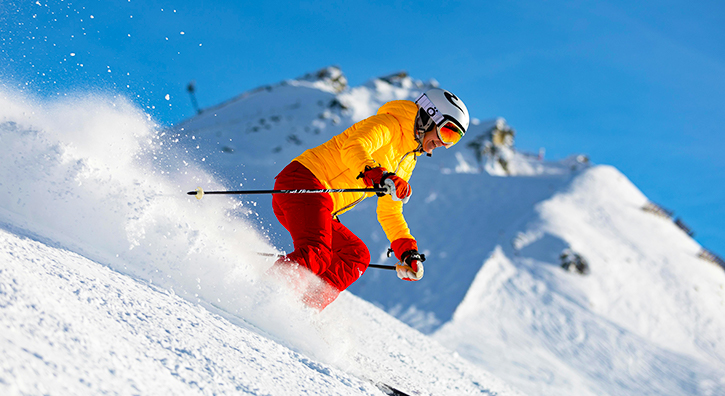0800 260 5082
Available from Available from Monday to Friday 9am to 5pm. Closed on weekends.
Available from Available from Monday to Friday 9am to 5pm. Closed on weekends.
For a blend of grace, skill, and endurance, try telemarking—a classic skiing technique that combines elements of alpine and Nordic skiing and that never ages a year. Whether you're carving down groomed slopes or exploring off-piste terrain like a true mountaineer, telemarking offers a unique, free-heel experience that enhances your control and agility on the snow. Perfect for those looking to refine their technique and build strength, this elegant discipline requires balance, precision, and a love for fluid movement. And don’t worry, with proper instruction and modern equipment, telemarking is both an accessible and rewarding way to elevate your skiing experience.
Find out the best destinations for your ski holidays
The foundation of telemark skiing lies in choosing the right skis and boots. Telemark skis are designed for versatility, allowing skiers to navigate both groomed slopes and backcountry terrain. Your ski choice should match your weight, ability level, and preferred skiing style. Equally important, telemark boots provide great flexibility and support while enabling the signature free-heel movement. Many modern telemark boots feature NTN bindings for improved power transfer and control. A well-fitted boot enhances comfort and control, ensuring stability as you master the telemark turn. Make sure the liner inside the boot molds well to your foot, as a proper fit can make a lot of difference in performance. Beginners should focus on developing a strong stance and balance to gain confidence in their technique.
Layering properly is essential for a comfortable day on the slopes. Start with a moisture-wicking base layer to keep sweat away, add an insulating middle layer for warmth, and finish with a waterproof, breathable outer shell to protect against wind and snow. This layering system keeps you warm and dry while allowing freedom of movement—key for the dynamic motion of telemark skiing. A soft shell jacket can be a great choice for mobility, especially in variable weather conditions.

Telemark bindings are a crucial component, offering the flexibility and range of motion needed for smooth, fluid turns. They should be properly adjusted to match your skiing style and ability level. If you plan on venturing into more rugged terrain, consider carrying crampons for added grip when hiking up icy sections. Additionally, wearing a helmet is highly recommended for safety, providing protection on both resort trails and backcountry descents. Properly set-up gear ensures a controlled and enjoyable telemarking experience, letting you focus on perfecting your technique and exploring new terrain.
Your stance is a key factor in mastering telemark skiing. Unlike alpine skiing, telemarking requires a free-heel movement, meaning your weight shifts dynamically between your front and back foot. A proper stance involves keeping your upper body stable while bending your inside knee into the classic telemark position. Whether you're on groomed slopes or deep powder, maintaining balance and flex ensures better control and efficiency in your turns.
Control is essential for a smooth telemarking experience. Start by practicing weight distribution and edge control, ensuring a fluid transition between turns. Engaging your core and keeping movements controlled helps maintain stability, especially on steeper slopes. As you gain confidence, you can experiment with deeper lunges and varied terrain, improving your technique and efficiency on the mountain. A good tip is to focus on smooth transitions between turns rather than abrupt shifts, which can throw off your balance.

If you're new to telemarking, taking a lesson is highly recommended to develop proper technique from the start. Instructors will guide you through the essentials, from stance and balance to executing smooth, controlled turns. Starting on gentle slopes allows you to build confidence, while expert coaching helps refine your movements, making it easier to progress and fully enjoy this unique skiing discipline. Telemarking may be an old technique, but its challenge and elegance remain timeless.
When selecting a resort for your telemark skiing adventure, consider the variety of terrain available. Resorts with a mix of groomed runs, moguls, and off-piste options provide the best conditions for improving your technique. Look for resorts with reliable snowfall and well-maintained slopes to ensure an enjoyable experience. A good selection of trails and quality snow conditions will enhance your telemarking journey, making it a great experience each annum.

A valid lift ticket is essential for accessing the slopes efficiently. Purchasing your ticket in advance can save time and help you avoid long queues. Many resorts offer daily, multi-day, or season passes, providing flexibility based on your trip length. A well-connected lift system allows you to explore different areas of the mountain with ease, maximizing your time on the slopes.
Resorts categorize their runs by difficulty, making it important to choose slopes that match your ability. Beginners should start on gentle, well-groomed trails to practice balance and technique. As confidence grows, intermediate and advanced telemarkers can tackle steeper terrain, moguls, and powder fields to refine their skills. Always progress at your own pace, ensuring control and stability with each turn.